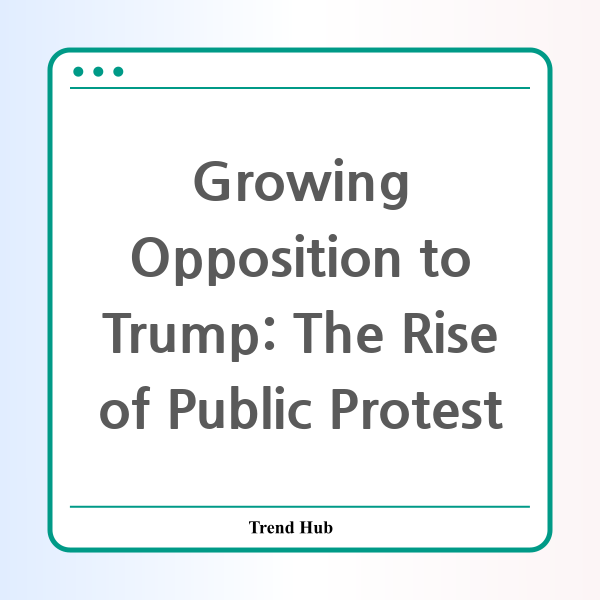* This website participates in the Amazon Affiliate Program and earns from qualifying purchases.

Are grassroots movements the key to challenging Trump’s agenda in his second term?
As President Trump marks his first 100 days in office for his second term, a palpable shift is underway in the political landscape of the United States. From the initial hesitance of opposition groups to a surge of grassroots protests, the dynamics of dissent have evolved significantly. This blog post delves into the unfolding narrative of resistance, highlighting how ordinary citizens are taking the reins in raising their voices against the Trump administration.
The resistance against Trump started with a scenario far less favorable than during his first term. During his initial inauguration, millions participated in the Women’s March, setting a precedent for mass protests. However, this time, while early opposition was slow to gain traction, the groundwork for a much larger movement was being laid. Data from recent protests indicates surprising levels of engagement and a strong public sentiment against Trump’s policies.
One noteworthy aspect of the current resistance is the increasing participation in street protests. According to research by Harvard’s Crowd Counting Consortium, the period from January 22 to March of this year saw twice as many demonstrations as in the same timeframe during Trump’s first term. The largest single protest, which occurred on April 5, demonstrated a unification of various movements, drawing millions across cities and towns nationwide.
Economic resistance has also taken shape, with activists targeting major corporations linked to perceived government overreach. Notably, the economic boycott of Tesla and protests at its dealerships reflect a growing trend where consumers wield their purchasing power as a form of protest. Such actions illustrate how dissent is not only manifesting in physical gatherings but also in strategic economic boycotts.
On the political front, traditionally passive Democratic leaders are starting to find their voice and address the momentum of public sentiment. The calls to action are resonating, with prominent Democrats like Bernie Sanders and Alexandria Ocasio-Cortez leading rallies that attract tens of thousands of supporters. This shift signifies a realization within the party that inaction could result in political obsolescence.
Furthermore, the opposition is not solely relying on political entities to lead the charge. Activists and everyday citizens are taking significant steps to organize and amplify their messages. The rise of decentralized protests has proven effective, enabling individuals from all walks of life to come together and advocate for their rights and beliefs, particularly in critical areas such as immigration, labor, and civil rights.
As the political landscape shifts, the question remains—what comes next? With Trump’s approval ratings dipping and opposition protests scheduled for significant dates like May Day, the momentum is likely to continue building. Organizations supporting progressive candidates are reporting an uptick in interest, suggesting that the public is eager to see their voices represented in local and national elections.
The challenge for the opposition is not just to resist but to create a narrative of change that attracts even more supporters who might typically align with Trump. By showcasing the importance of solidarity, community-driven movements can foster a sense of belonging among participants, motivating them to act. Ultimately, as the landscape continues to evolve, it is clear that the path of grassroots movements holds potential for reshaping political discourse in America.
In conclusion, the collective efforts of everyday Americans, combined with the resurgence of Democratic engagement, signal a new chapter in the fight against Trump’s policies. As protests grow and public sentiment shifts, the impact of this grassroots opposition could play a pivotal role in shaping the outcomes of future elections and policy directions across the nation.
* This website participates in the Amazon Affiliate Program and earns from qualifying purchases.